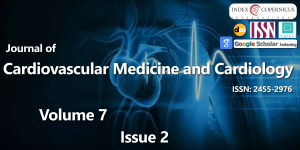The role of cardiac rehabilitation in aviation medicine
Main Article Content
Abstract
After a cardiovascular illness, an aviation license becomes invalid until the pilot obtains a special issuance medical certificate from the US Federal Aviation Agency (FAA) affirming successful medical treatment and rehabilitation. Many pilots attempt to regain health and fitness without the benefit of guidance from cardiac rehabilitation practitioners and, therefore, fail to satisfy FAA requirements. I the US, in 2016, more than 10,000 pilots with cardiovascular disorders were denied special issuance of a medical certificate. For many of these pilots with heart disease, participation in a cardiac rehabilitation program may have proven essential for successful completion of a rigorous medical examination that satisfied FAA requirements. This article highlights specific assistance provided by a cardiac rehabilitation program developed for pilots. Program objectives are; 1). the highest possible outcome, 2). establish a safe and effective independent exercise program, 3). obtain measures of compliance and success with an independent exercise program, 4). document tolerance of medications and ensure that the medication regimen complies with FAA guidelines, 5). document stability of the serum glucose in diabetic patients engaged in rigorous, prolonged exercise, and 6). prepare the patient for performance of a diagnostic treadmill test in which 100% HRmax must be achieved. It is estimated that fewer than 15% of pilots with heart disease utilize services offered by cardiac rehabilitation practitioners.
Downloads
Article Details
Copyright (c) 2020 Dwyer J.

This work is licensed under a Creative Commons Attribution 4.0 International License.
Federal Aviation Regulations. US Government Printing Office 2020.
Engelberg AL, HL Gibbons, TC Dodge (1986) A review of the medical standards for civilian airmen. JAMA 25: 1589-1599. Link: https://bit.ly/2YOv9MH
Office of Aviation Medicine. Guide for Medical Examiners (2020) US Department of Transportation, Federal Aviation Administration Link: https://bit.ly/2AofwCa
McGiffin D, DC Naftel, Spann JL, Kirklin JK, Young JB, et al. (1998) Risk of death or incapacitation after heart transplantation, with particular reference to pilots. J Heart Lung Transpl 17: 497-504. Link: https://bit.ly/31BAclc
American Association of Cardiovascular and Pulmonary Rehabilitation: Guidelines for Cardiac Rehabilitation and Secondary Prevention Programs. 6th. Champaign, IL: Human Kinetics 2021. Link: https://bit.ly/2NIEgb5
Dwyer J (2001) Return to Flight Status After Cardiac rehabilitation: Three Case Histories. J Cardiopulmon Rehabil 21: 280-287. Link: https://bit.ly/3dO9HeV
Osswald S, Mikles R, Nixon W, Celio P (1996) Review of cardiac events in USAF aviators. Aviat Space Environ Med 67: 1023-1027. Link: https://bit.ly/2BRR5xo
Khan MA, Amroliwalla FK (1996) Flying status and coronary revascularization procedures in military aviators. Aviat Space Environ Med 67: 165-170. Link: https://bit.ly/3dPtpH1
Shiu MF (1988) Percutaneous transluminal coronary angioplasty and flying status. Europ Heart J 101-105. Link: https://bit.ly/2ZmnxQq
Hoiberg A (1985) Cardiovascular disease among US Navy pilots. Aviat Space Environ Med 56: 397-402. Link: https://bit.ly/2YMgUI8
Chaitman BR, Davis KB, Dodge HT, Fisher LD, Pettinger M, et al. (1986) Should airplane pilots be eligible to resume active flight status after coronary bypass surgery?: A CASS registry study. J Am Coll Cardiol 8: 1318-1324. Link: https://bit.ly/38hIS1k
Hammond IW, Lee ET, Davis AW, Booze CF (1984) Prognostic factors related to survival and complication-free times in airmen medically certified after coronary surgery. Aviat Space Environ Med 55: 321-331. Link: https://bit.ly/31FF60q
Toff WD, Camm AJ (1988) Implanted devices and aviation. Europ Heart J 9: 133-138. Link: https://bit.ly/3gk3IzV
Toff WD, Edhag OK, Camm AJ (1992) Cardiac pacing and aviation. Europ Heart 13: 162-175. Link: https://bit.ly/2ZpNMph
Agency for Health Care Policy and Research (1995) Clinical Practice Guideline 17: Cardiac Rehabilitation. US Department of Health and Human Services publication 96-0672.
Thomas RJ (2007) Cardiac Rehabilitation/Secondary Prevention. A Raft for the rapids; Why have we missed the boat? Circ 116: 1644-1646. Link: https://bit.ly/2Zq0yEa





